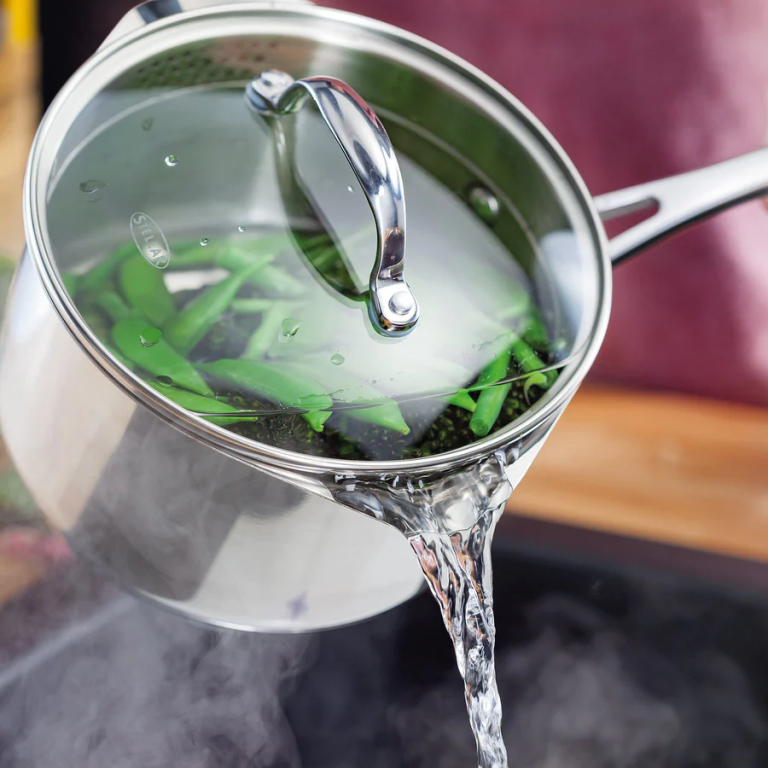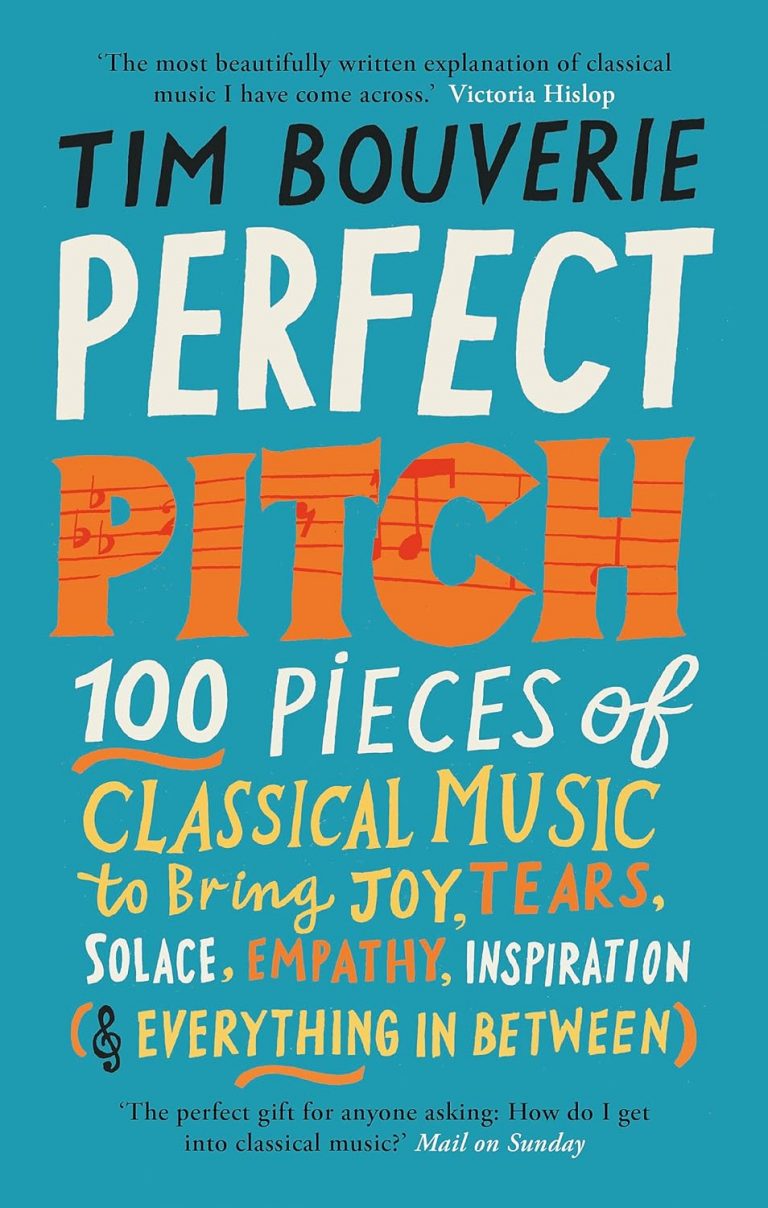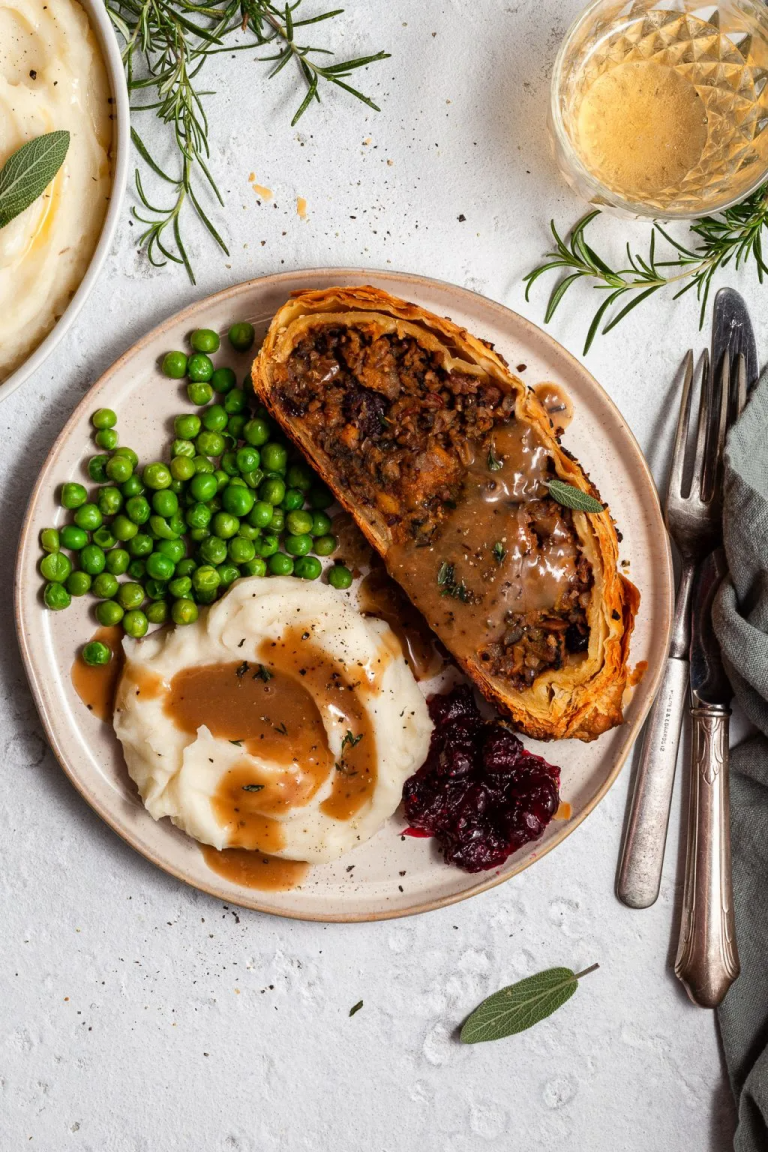
The Two Spoons Cookbook is a super book by a Canadian who lived and cooked in France for several years. She went vegan in her early 20s after losing a loved one to cancer, and also struggling with severe IBS.
If making pastries, keep fresh dough away from children and pets. Read more on food safety for people and pets.
French cooking uses a lot of garlic and onions. Like citrus fruits and rhubarbs, just bin allium scraps (garlic, onion, shallots, chives, leeks), as acids could harm compost creatures.
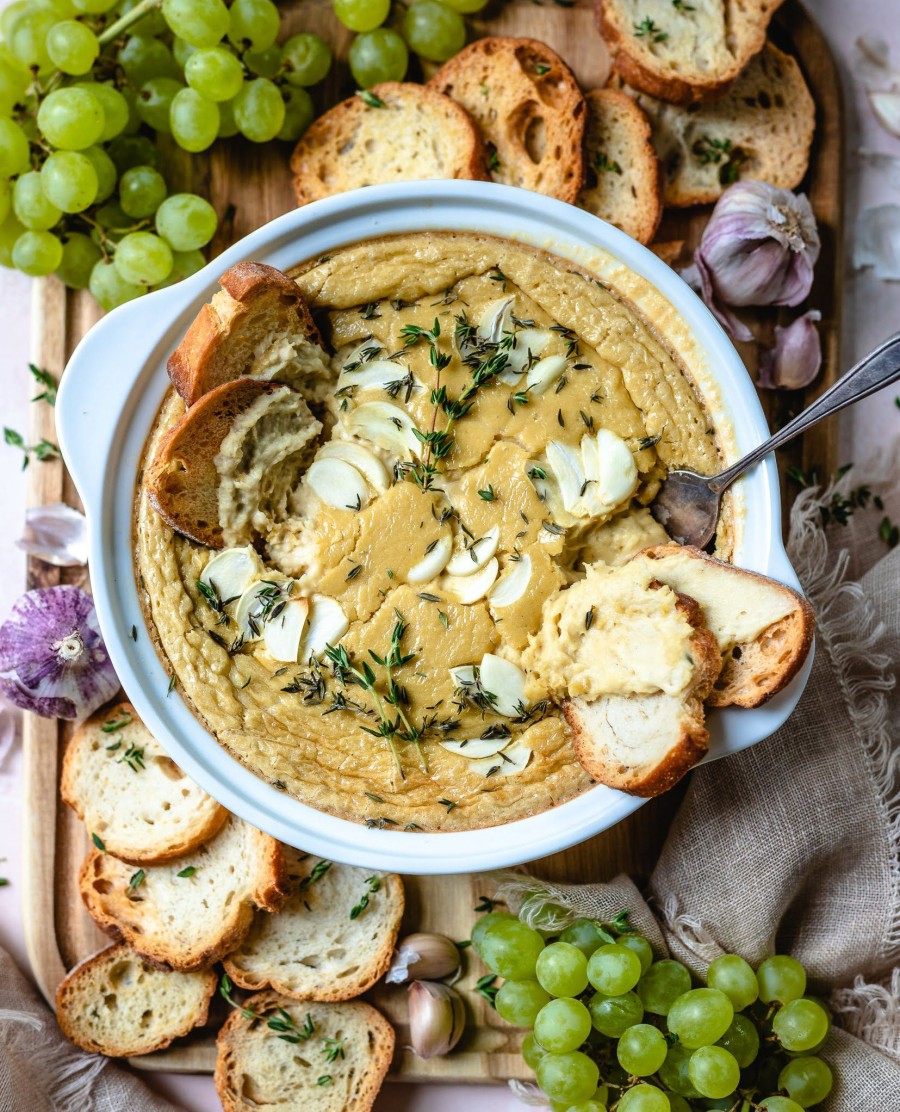
The book offers a show-stopping blend of over 100 dishes including:
- Baked ‘Brie’
- Classic Flaky Croissants
- Buttery Brioche
- Herb Garlic Cheese
- Mushroom Bourguignon with Buttery Mash
- Summer Rainbow Ratatouille
- Pear Tarte Tatin
- Sweet Cherry Frangipane Tart
Vegan Recipes from France includes basic foundation recipes (stock, baguettes, brioche, croissants, béchamel, aioli and cheese. Plus basic recipes for soups, salads and terrines.
Then it offers a selection of recipes for tarts, gratins, omelettes, quiches, souffles and crepes. Desserts include tarte tatin, clafoutis, gateau, madeleines and mousse au chocolate.
Boost Health with Vegan French Recipes
Vegan French recipes focus on fresh produce, grains, and plant proteins. You will often see lentils, mushrooms, chickpeas, tomatoes, leeks, and seasonal greens. These ingredients bring fibre, antioxidants, and healthy fats that support a balanced diet.
Fibre helps digestion and supports a healthy gut. Antioxidants from berries, tomatoes, and leafy greens help protect cells from stress. Swapping butter and cream for oil, nuts, and seeds reduces saturated fat and adds vitamin E and omega-rich oils. The result is meals that support heart health, stable energy, and reduced inflammation.
Simple swaps keep flavour without the heaviness. Cashew cream blends into sauces for a lush texture. Olive oil and herbs brighten dressings and glazes. Mushrooms bring a deep, savoury note that stands in for meat in stews and pies. Add nuts or seeds for crunch and healthy fats, and your plate stays balanced and satisfying.
Improve Digestion and Energy Levels
French plant-forward dishes are rich in fibre. Vegan ratatouille, packed with courgette, aubergine, peppers, and tomatoes, feeds gut microbes that aid digestion. This supports regularity and can ease bloating over time. It also helps you feel full, which keeps snacking in check.
Whole grains help with steady energy. Buckwheat galettes, often used for savoury crêpes in Brittany, are naturally gluten free and high in fibre. They release energy slowly, so you avoid the mid-afternoon slump that heavy meat lunches can bring. Pair galettes with mushrooms, spinach, and a light walnut sauce for a hearty but calm meal.
Support Weight Management Efforts
Vegan French meals often deliver fullness without excess calories. A salad niçoise without tuna, built with green beans, tomatoes, olives, new potatoes, and white beans, keeps protein and fibre high while keeping saturated fat low. A bright Dijon and lemon dressing ties it all together.
Portion control becomes easier when plates are loaded with vegetables and pulses. You still get texture, colour, and flavour, but the calorie count stays modest. This approach suits both lighter weekdays and indulgent weekends.
Enhance Overall Wellbeing
Your mood and general wellbeing can benefit too. Omega-3s from ground flaxseeds, used in dressings or as an egg replacement in baking, support brain health. Vitamin C from citrus, often used to lift sauces or brighten roasted veg, helps iron absorption and supports the immune system. Try citrus on vegan escargot-style mushrooms, where garlic, parsley, and lemon create a lively finish.
Do not forget minerals. Lentils and chickpeas bring iron and zinc. Pair them with vitamin C sources, like peppers or lemon, to aid absorption. A drizzle of extra-virgin olive oil adds richness and supports heart health, without relying on butter.
Support the Environment Through Cooking
Skipping animal products in classic French dishes can cut your household’s environmental footprint. Dairy cows and meat farming produce high emissions. Cheese and beef in particular carry heavy impacts. Plant-based dishes lower those emissions and reduce pressure on land and water.
France prizes regional produce and seasonal markets, which already aligns with a lower-impact approach. When you build vegan French meals around local artichokes, leeks, mushrooms, and herbs, you support biodiversity and reduce transport miles. Many producers across France also back organic and sustainable farming, which fits well with this style of cooking.
Buying what is in season is a simple rule with big gains. Seasonal veg often tastes better, costs less, and stores well. Bring a basket to a local market if you can, or choose the seasonal range at your usual shop.
Reduce Your Carbon Footprint
Consider a vegan bouillabaisse. Swap fish for seaweed, fennel, saffron, tomatoes, and potatoes. You keep the aromatic broth, but reduce the emissions linked to fishing and cold-chain transport. The flavour is bold and the method stays true to French technique, especially if you serve it with garlicky rouille made with aquafaba.
Stews are another easy win. Mushroom bourguignon offers the depth of Burgundy wine, thyme, and shallots, without beef. It is a clear example of how lower-emission ingredients can still deliver classic comfort.
Conserve Water and Resources
Water use drops when you cook with pulses and potatoes instead of livestock. Lentils, chickpeas, and mushrooms need far less water than raising animals for dishes like coq au vin. Plant-based ingredients also store well and create less waste, which stretches your shopping further.
Batch cooking helps too. Simmer a large pot of lentil daube, then portion it for the freezer. You save time, reduce energy use at home, and always have a nourishing meal ready.
Promote Sustainable French Traditions
French cuisine values terroir, the sense of place in ingredients. Vegan adaptations honour that idea by highlighting regional produce. Think of Provençal tomatoes and basil, Breton buckwheat, or Alsatian cabbage and apples. Cooking this way keeps money in local food systems and protects smaller farms.
This approach respects tradition while looking ahead. It proves that classic methods, like slow braising or careful emulsification, can sit well with low-impact ingredients.
Easy and Tasty Vegan French Dishes

Cooking vegan French food at home brings practical rewards. You save money, learn new skills, and enjoy variety. Many recipes are simple once you know the method. You can cook for a family or a solo evening without fuss.
Techniques matter. Emulsifying a plant-based aioli teaches timing and patience. Blending cashews into a smooth cream teaches soaking and seasoning. These small skills stack up, and soon you will read recipes with more confidence.
Cultural respect sits at the heart of this style. You keep the spirit of the dish, even as you innovate. A vegan crème brûlée with coconut milk and a crunchy sugar top still feels French, yet suits a modern table.
Save Money on Ingredients and Dining Out
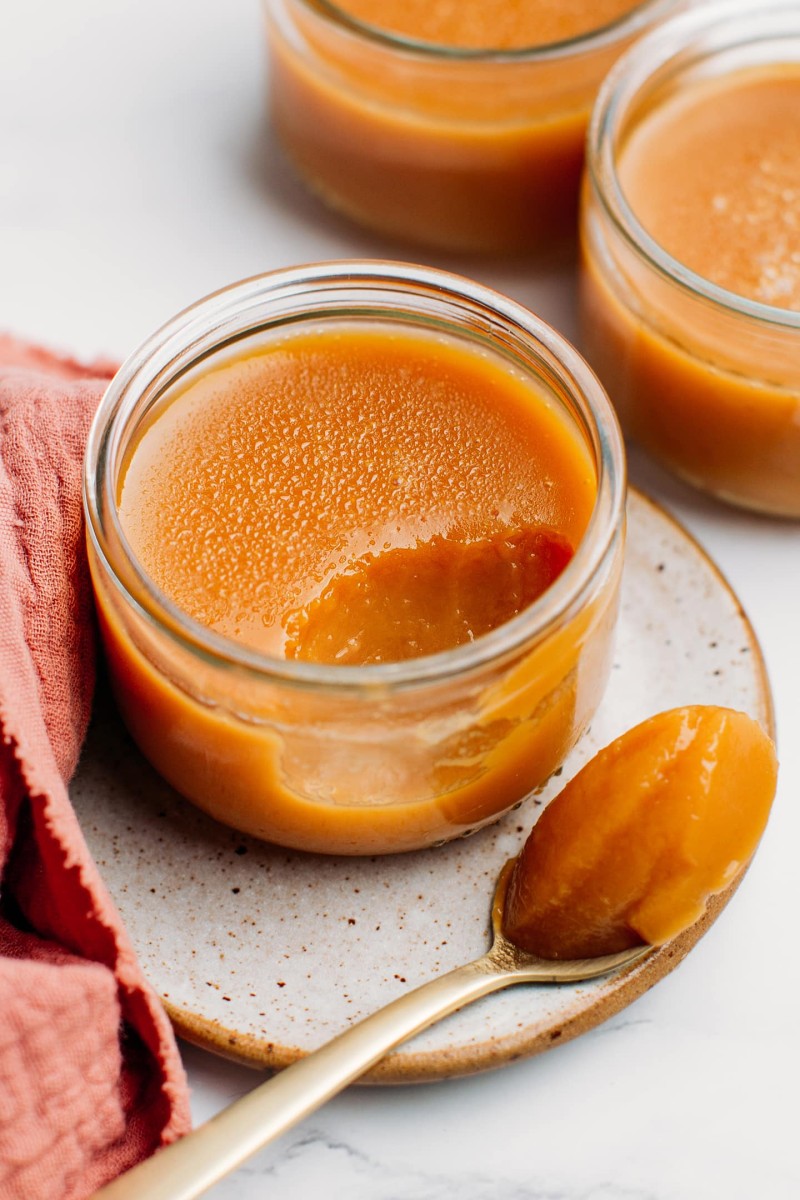
4-ingredient vegan caramel pot de creme (Full of Plants)
Plant-based staples cost less than premium meats or aged cheeses. Dried lentils, potatoes, onions, carrots, and seasonal greens create many meals with small budgets. You also reduce reliance on takeaways when you batch cook and plan simple dishes.
- Smart swap: Use chickpeas in a Provençal stew instead of pricey cuts of meat.
- Pantry power: Keep Dijon mustard, capers, tomato paste, and dried herbs on hand. These boost flavour without extra cost.
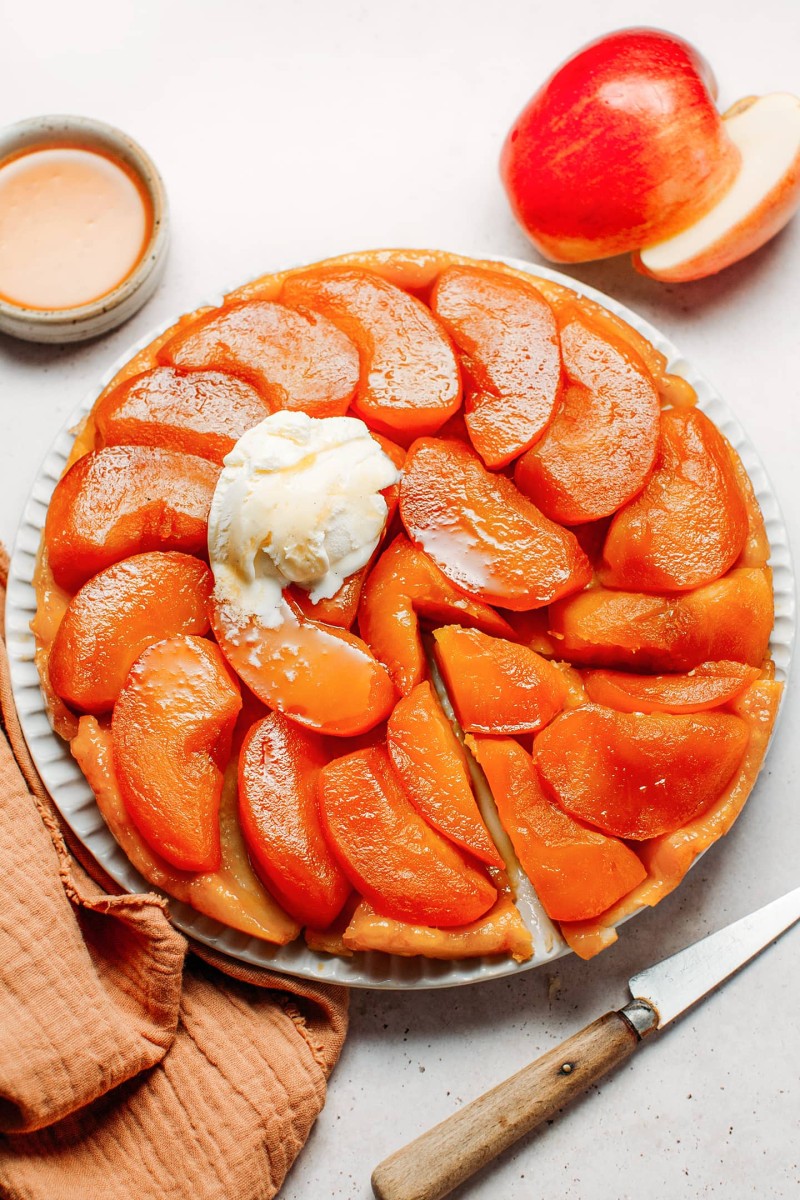
Full of Plants (use organic apples, conventional ones are sprayed with dead insects, to make them shiny).
Cooking at home also helps with portions, which reduces waste and saves money over time.

